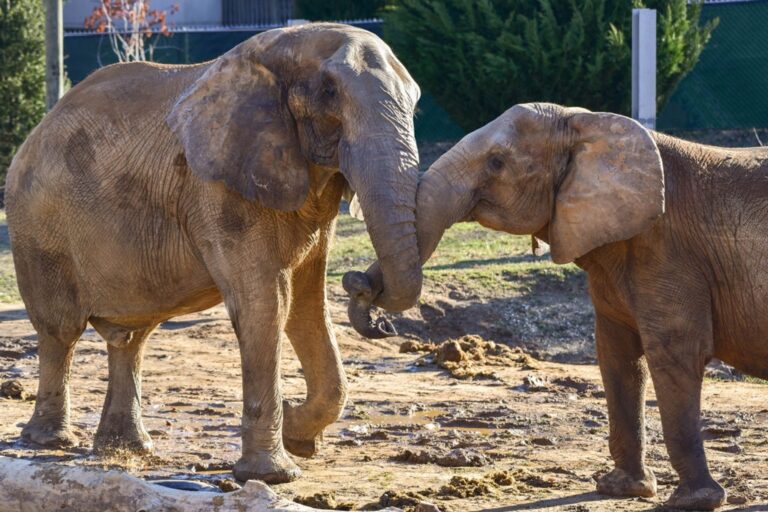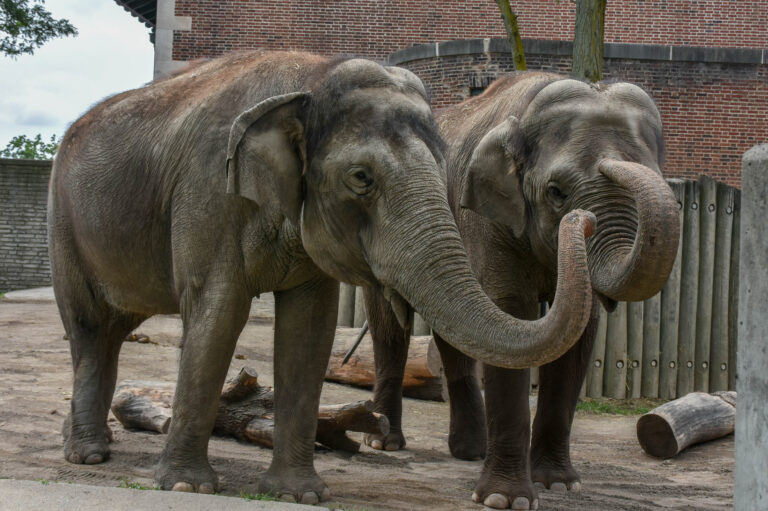Why Do Elephants Push Over Trees
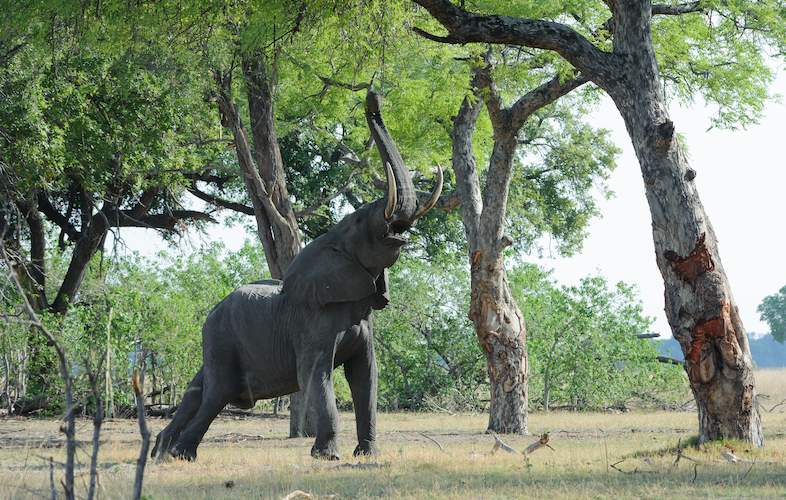
Elephants push over trees to access the leaves and branches, as well as foraging for roots, bark, and nutrients. They play a crucial role in tree losses in their habitat.
Elephants have a significant impact on treefall rates and patterns, although humans are also responsible for high numbers of treefall in African woodlands. Scientists have recently been able to quantify the number of trees African elephants have taken down in their quest for food.
Elephants break trees to gain easier access to leaves, roots, and nutrients, playing a key role in tree losses within their ecosystem.
Reasons For Elephants Pushing Over Trees
Elephants push over trees for foraging nutrients, accessing leaves, and bark. The destructive behavior serves benefits by aiding tree propagation and creating diverse habitats. Comparatively, elephants cause more tree loss than humans in African woodlands, impacting the ecosystem. Quantifying the number of trees toppled by elephants emphasizes their significant environmental influence.
Implications For Conservation
Ecological Role of Elephants: Elephants play a key role in the loss of trees, particularly during the dry season. They forage on trees, consuming leaves, twigs, roots, bark, and fruits when available.
Strategies to Protect Trees: Protecting trees from elephant damage involves implementing various strategies. Some approaches include using physical barriers, such as fences or trenches, to create a separation between elephants and trees. Additionally, alternative food sources can be provided to deter elephants from foraging on trees.
Balancing Elephant Population and Tree Loss: While it is important to protect trees, it is equally important to maintain a healthy elephant population. Ensuring a balance between elephant populations and tree loss is crucial for the overall ecosystem. Conservation efforts can focus on implementing sustainable management practices that consider the ecological role of elephants and the need to protect trees.
Understanding Elephant Behavior
Elephants push over trees due to several reasons. One reason is territoriality and dominance. Elephants use tree pushing as a way to establish dominance and mark their territory. It is a display of power and strength. Another reason is intelligence and emotional intelligence. Elephants are highly intelligent and have strong emotional bonds. Pushing over trees is a way for them to show their intelligence and communicate with other elephants. Additionally, bees play a role in deterring elephants from trees. The buzzing sound and stings from bees can discourage elephants from approaching trees. Lastly, elephants may debark trees during the dry season. This is because they forage from trees and consume bark as part of their nutritional needs. Overall, elephants pushing over trees is a complex behavior influenced by territorial, emotional, and environmental factors.
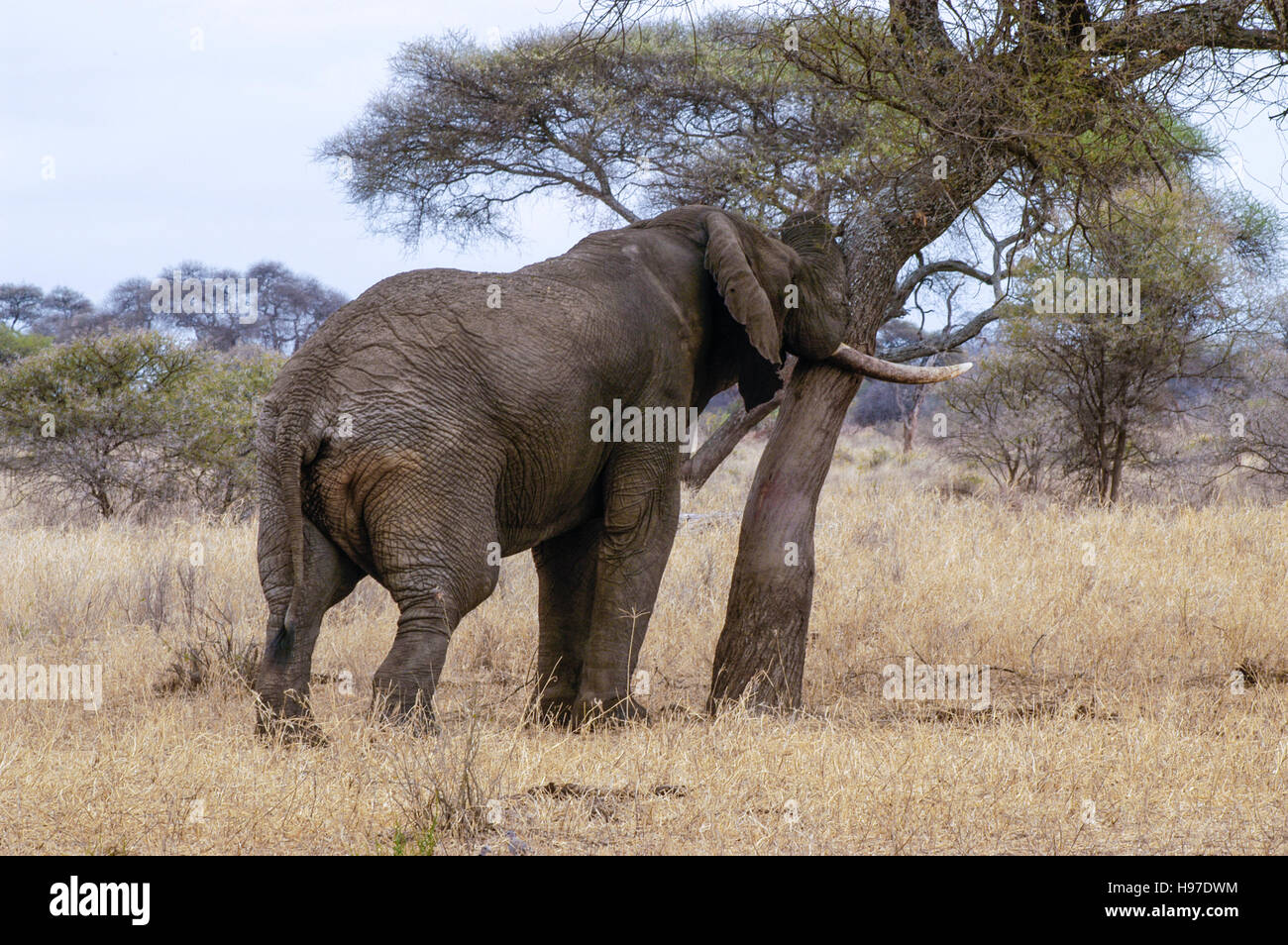
Credit: www.alamy.com
Research Findings
Research findings indicate that elephant behavior in pushing down trees has a significant impact on African woodlands. Comparing elephant and human treefall, it was found that elephants had the greatest effect, but humans were also responsible for high numbers of treefall. Elephants turn their attention to foraging from suitable species of trees, consuming leaves, twigs, roots, and bark, especially during the dry season. Scientists have quantified the number of trees African elephants have taken down, highlighting their destructive nature in toppling trees to reach leaves. The study raises questions about who has the greatest effect on treefall in African woodlands, prompting further research into the implications for woodland ecosystems.
Ecological Significance
Elephants play a crucial role in the ecosystem, including the ecological significance of tree losses. The impact of tree loss on biodiversity is significant as it affects the habitat and food sources for numerous species. Conservation measures are necessary to protect both the elephants and the trees. The destruction of trees by elephants is a result of their foraging behavior during the dry season. They strip the bark and consume leaves, twigs, and roots. Researchers have found that elephants have a greater effect on treefall rates and patterns compared to humans in African woodlands. Scientists have also quantified the number of trees that African elephants have taken down in their search for leaves growing on top branches. Understanding the reasons behind elephants pushing over trees is essential for conservation efforts and the preservation of biodiversity.
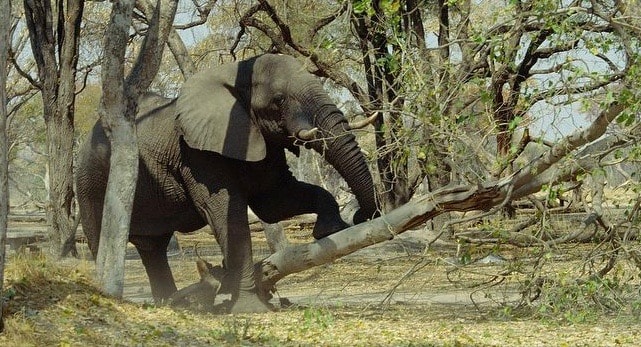
Credit: www.ecolifeconservation.org
Credit: www.quora.com
Frequently Asked Questions On Why Do Elephants Push Over Trees
Why Do Elephants Debark Trees?
Elephants debark trees to forage for leaves, twigs, roots, bark, and other nutritional resources, especially during the dry season. They consume suitable species of trees, including the bark, to meet their nutritional needs. Elephants have a significant impact on treefall rates, but humans also contribute to treefall in African woodlands.
Who Knocks Down The Most Trees Humans Or Elephants?
Elephants knock down the most trees, mainly to access roots, bark, and nutrients. They have a greater impact than humans on treefall rates and patterns.
Why Do Elephants Pull Down Branches?
Elephants pull down branches to access the roots and bark of trees, where they can find nutrients. They also do it to get easier access to leaves and other sources of food. Scientists have recently quantified the number of trees African elephants have taken down due to their destructive nature.
Can Elephants Knock Down Trees?
Elephants knock down trees to access the roots, bark, and nutrients in the tree, not just for the leaves. They play a key role in tree losses, but humans also contribute to high numbers of treefall in African woodlands.
Conclusion
In their quest for food, elephants push over trees to forage on the leaves, twigs, roots, and bark, meeting their nutritional needs. Additionally, they consume fruit and flowers when available. While some may believe they do it mainly to access higher leaves, it appears their primary aim is to obtain energy-rich roots and bark.
Scientists have observed that elephants have the most significant impact on treefall rates in African woodlands. This behavior highlights the intricate relationship between elephants and their environment. Understanding their foraging behavior and its impact allows for better conservation efforts and wildlife management.
